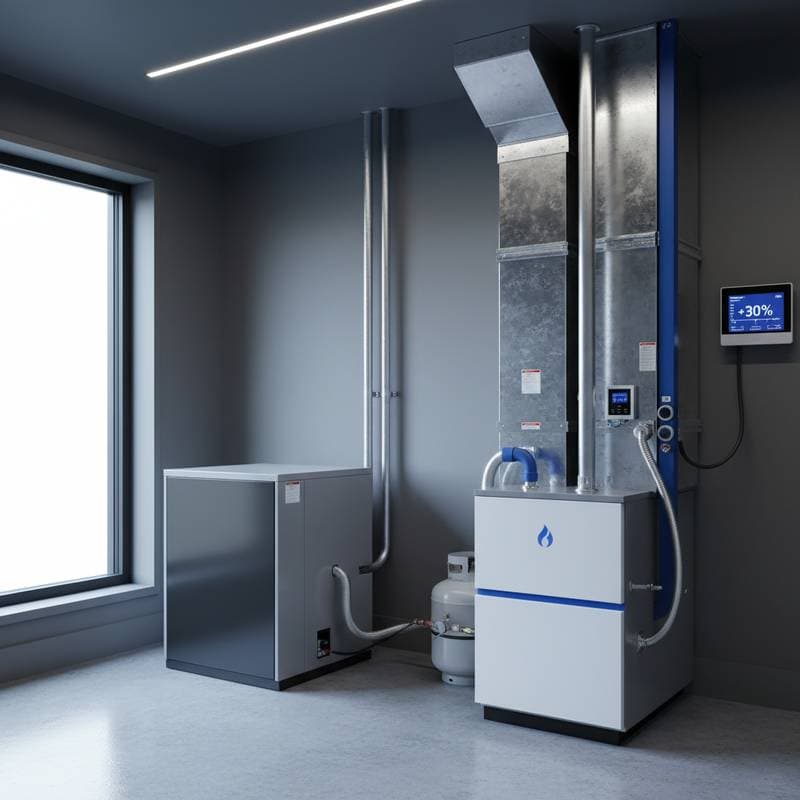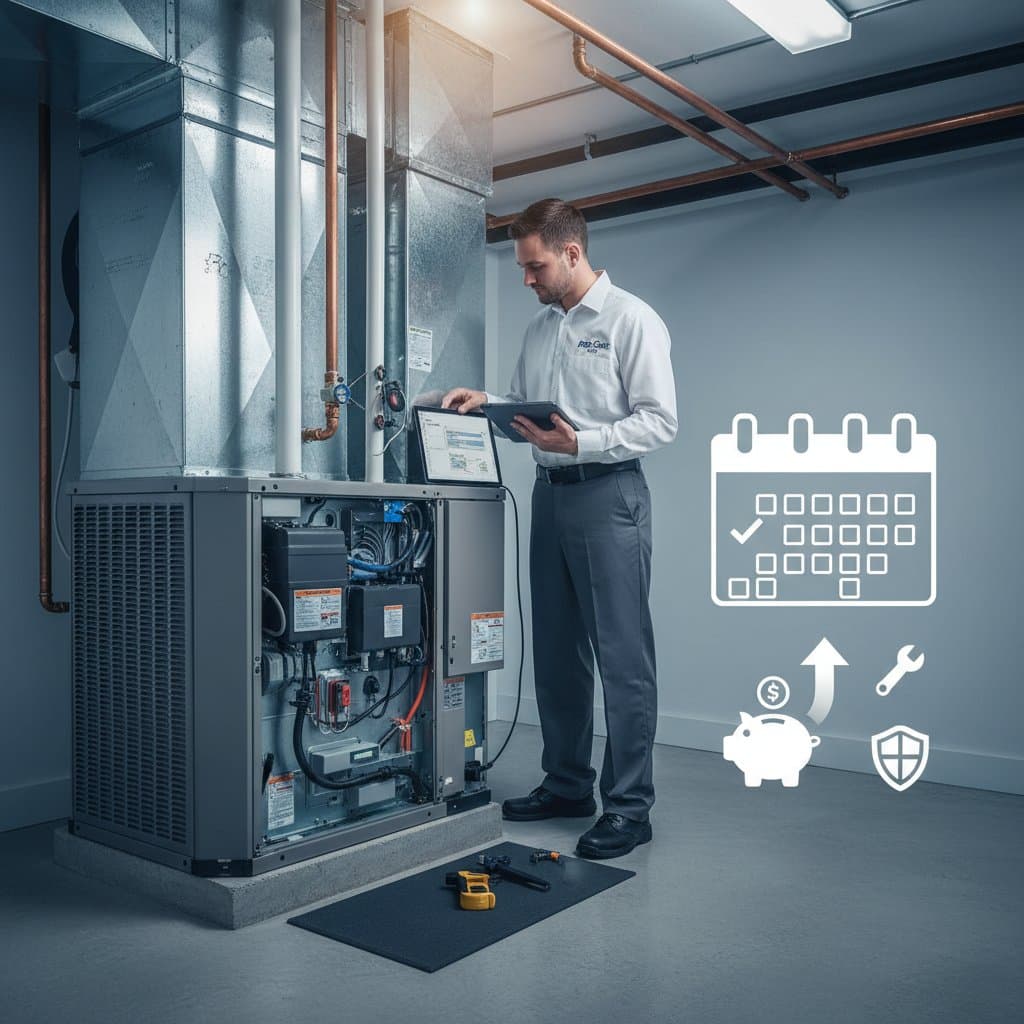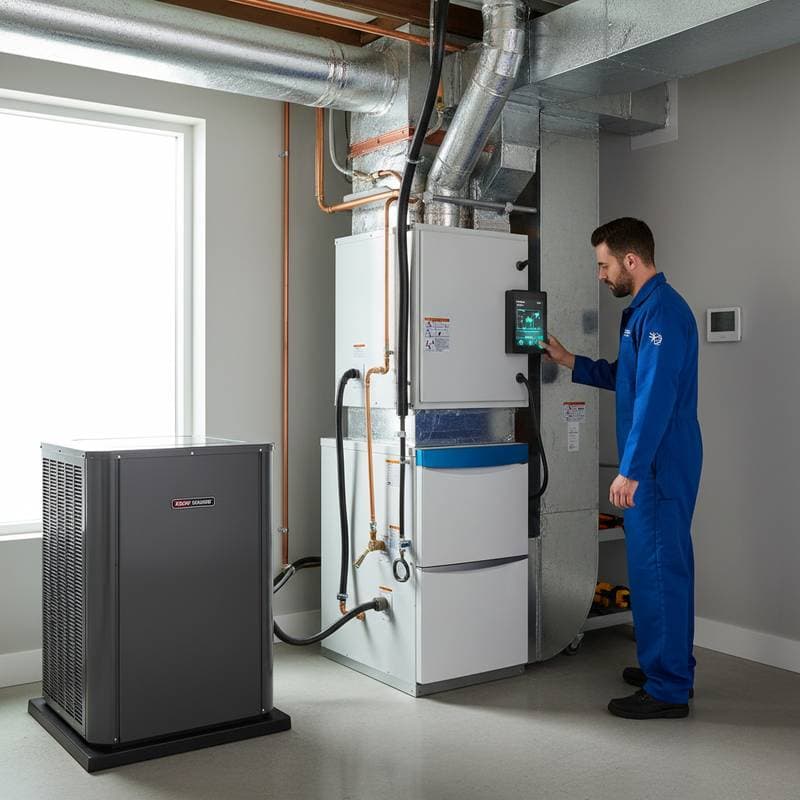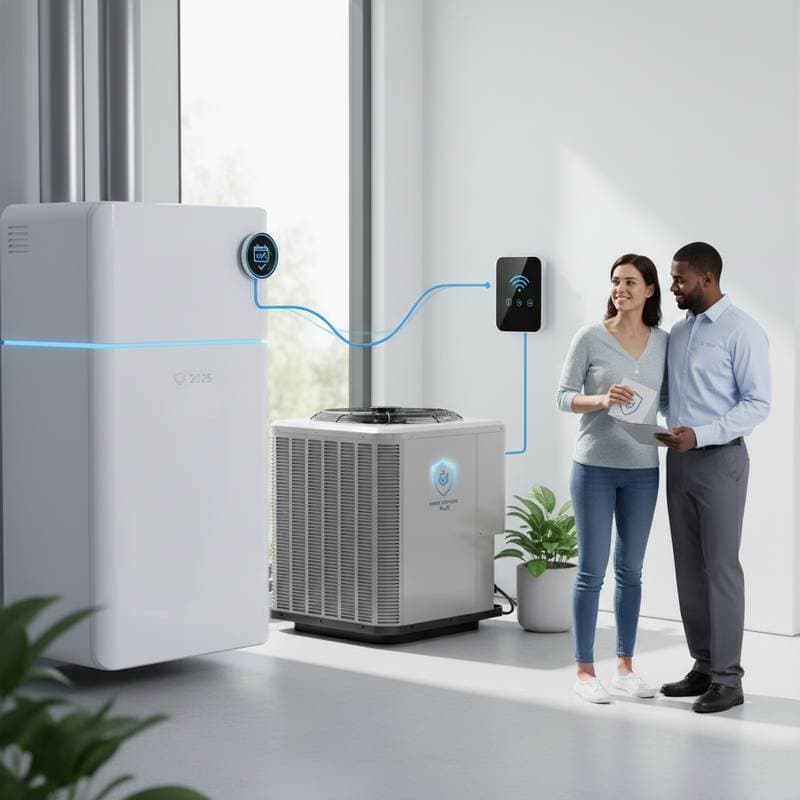Understanding Dual-Fuel HVAC Systems in 2025
Homeowners increasingly select dual-fuel HVAC systems for efficient heating and cooling. These hybrid setups integrate a gas furnace for reliable performance with an electric heat pump for energy savings, offering adaptability to weather fluctuations and varying energy costs.
The result is consistent comfort throughout the year, with the system optimizing operations based on external conditions and fuel prices.
Core Components of Dual-Fuel Systems
A dual-fuel system combines two primary heating elements within a unified framework. The electric heat pump manages cooling and moderate heating tasks by transferring heat rather than producing it, which conserves electricity.
When temperatures plummet below efficient operating thresholds for the heat pump, typically around 30 degrees Fahrenheit, the gas furnace activates to deliver robust warmth. Integrated smart controls monitor conditions and seamlessly transition between sources, selecting the most economical option at any given moment.
This design ensures optimal performance in diverse climates, providing gas-powered intensity in extreme cold and electric efficiency during milder periods.
Energy Efficiency and Cost Savings
Dual-fuel systems excel in energy conservation, a key factor in their rising adoption. Heat pumps achieve efficiency by relocating existing heat, using approximately one-third the energy of conventional electric resistance heaters.
In colder weather, the gas furnace supplements without straining the heat pump, preventing efficiency losses. Homeowners often realize savings of 20 to 30 percent on heating bills compared to traditional single-fuel systems.
The system balances usage across natural gas, propane, or electricity, minimizing overall fuel consumption and stabilizing monthly expenses even as rates increase.
Environmental Benefits of Hybrid Heating
These systems contribute to lower environmental impact by reducing reliance on fossil fuels. The heat pump handles the majority of operations, limiting furnace runtime and associated emissions.
With many utilities incorporating renewable energy sources into their grids, electricity usage becomes progressively greener. This approach allows families to decrease their carbon footprint while maintaining high levels of home comfort.
Over time, the reduced fuel demand translates to meaningful contributions toward sustainability goals without compromising daily living standards.
Drivers of Adoption for Dual-Fuel Technology
Multiple factors propel the shift toward dual-fuel HVAC systems:
- Rising energy prices prompt selection of systems that prioritize the lowest-cost fuel source automatically.
- Variable climate patterns demand adaptable solutions that outperform rigid single-source alternatives.
- Financial incentives, including rebates from utilities and government programs, offset installation expenses for efficient upgrades.
- Advancements in controls, such as smart thermostats and variable-speed components, enhance responsiveness and precision.
- Long-term economics favor hybrids, as lower operating costs and durable equipment reduce lifetime ownership expenses.
These elements combine to make dual-fuel options a strategic choice for modern homes.
Installation Process and Home Compatibility
Dual-fuel systems integrate effectively with existing ducted HVAC configurations in most residences. Professionals assess the space, then install a compatible gas furnace alongside a matched heat pump and advanced thermostat.
Costs align with high-end single-system installations, influenced by factors like unit capacity, manufacturer, and duct modifications. Expect an investment that yields returns through sustained savings and improved reliability.
Consult certified technicians to confirm compatibility with current infrastructure, ensuring seamless integration and optimal sizing for specific home needs.
Maintenance Strategies for Optimal Performance
Regular upkeep sustains the efficiency of dual-fuel systems. Arrange professional servicing annually for the heat pump and furnace to inspect components and address wear.
Replace air filters every one to three months to maintain airflow and indoor air quality. Clear debris and snow from outdoor units seasonally to prevent obstructions.
Verify the automatic switchover function prior to winter, and employ programmable thermostats to fine-tune operations based on occupancy patterns.
Adhering to these practices minimizes downtime, extends equipment lifespan, and maximizes energy savings.
Benefits That Drive Homeowner Decisions
Dual-fuel systems appeal to homeowners seeking integrated solutions for comfort, economy, and adaptability. They provide year-round heating and cooling efficiency, responding dynamically to environmental changes.
Environmental advantages complement practical gains, offering a pathway to reduced emissions alongside dependable warmth. This versatility positions dual-fuel setups as a forward-thinking investment for evolving energy landscapes.
Steps to Upgrade Your Heating System
Evaluate your existing HVAC performance if efficiency or comfort falls short. Contact licensed professionals for assessments of home size, ductwork, and available energy sources.
Obtain multiple quotes to identify competitive pricing and confirm proper system sizing. Proceed with installation to secure year-round reliability, consistent bill reductions, and enhanced sustainability.
This upgrade equips your home to navigate fluctuating costs and weather patterns effectively.



